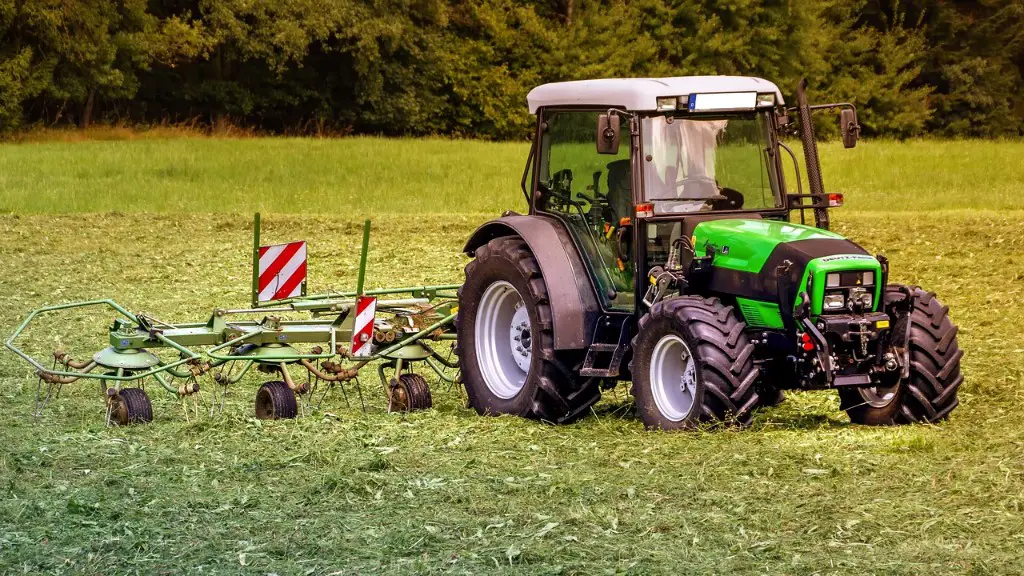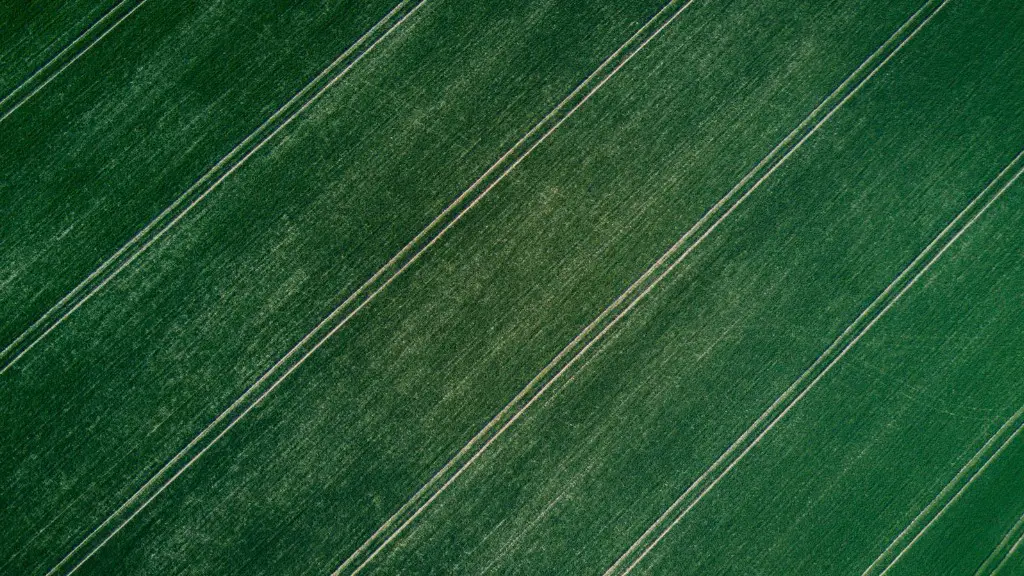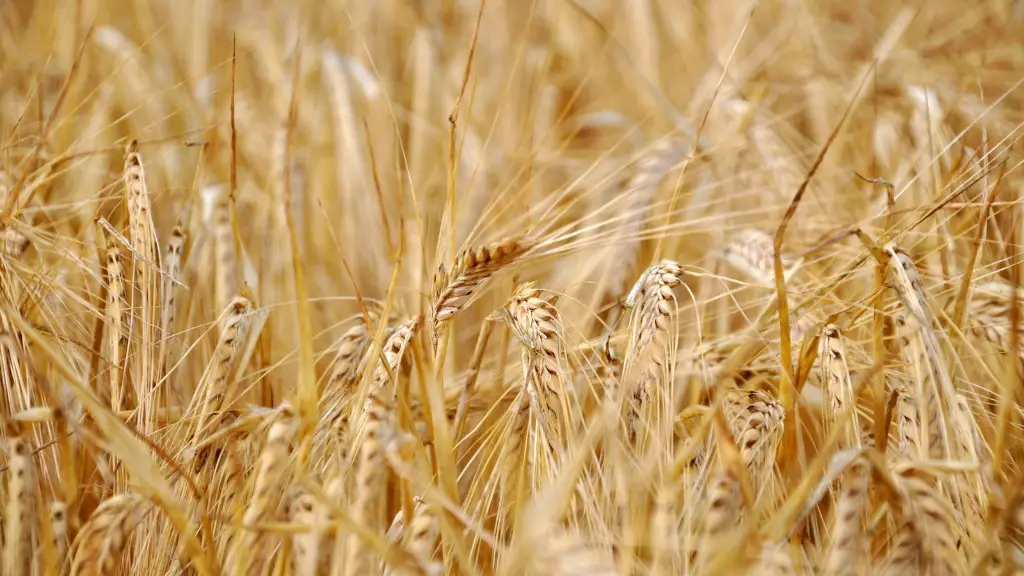Commodity chains in agriculture are links between the various elements in the supply chain of a product from its raw material source through production, transportation, marketing and consumption. The chain is largely determined by the type of product and the nature of agricultural production. It is usually made up of multiple steps, including farming, processing, transportation, packaging, retailing and consumption. The commodity chain is used to identify the different supply chain steps, the people and organizations involved and the resources used in each step.
Agricultural commodity chains link agricultural producers, processors, distributors, and retail outlets together. The chain starts with the crop production and ends with the consumption of the product. Each sector of the chain typically has multiple actors, and can involve firms of various sizes and complexity. Agricultural commodity chains are subject to a variety of trends, such as global integration, consolidation, private-sector domination, and environmental challenges.
The length and complexity of a commodity chain vary according to the type of product, the production process, the geographic region and the nature of the industry. For example, commodity chains for fresh produce are shorter and simpler than chains for processed goods. On the other hand, agricultural commodity chains in developing countries often involve more actors than those in developed countries. The nature and dynamics of a commodity chain depend on the core product, the geographical location, the production system, and the consumer preferences.
The commodity chain provides a useful framework for understanding how products move through the agricultural system. It helps to identify the various inputs, outputs and activities that are involved in the production and delivery of a product, as well as their associated costs, timeframes, and risks. It also reveals opportunities for collaboration, coordination and joint decision-making among the different stakeholders in the supply chain and for the reduction of food waste.
Food safety and quality are the primary concerns of agricultural commodity chains, and the industry can benefit from increased traceability and transparency. The commodity chain can also be an effective tool for sustainable agriculture initiatives, as it can help identify the sustainability risks associated with each link in the chain. Finally, it can be an important tool for improving the efficiency of agricultural production and supply chains, as it can provide insights into the most effective ways to streamline the different steps.
History of Agricultural Commodity Chains
Commodity chains in agriculture have a long history, stretching back to the traditional family farm-based agricultural system. The coffee commodity chain, in particular, is one of the oldest and most complex, as coffee has been grown, traded, consumed and socially enjoyed for centuries. Since the formation of a global agricultural commodity chain in the 1970s and 1980s, the number of agricultural commodity chains worldwide has increased substantially. Modern agricultural commodity chains are now much more likely to include substantial food processing activities than in the past.
The advent of industrialized agriculture and the global food system had a profound impact on agricultural commodity chains, and it is now much more common for food production to be highly integrated and internationalized. Modern agricultural commodity chains are often characterized by long distances between producers and consumers, and by complex and opaque supply chains. With the advent of big data and the “internet of things”, technologies such as blockchain can now be used to increase traceability and transparency in agricultural commodity chains.
Characteristics of Agricultural Commodity Chains
Agricultural commodity chains vary in length, complexity, and complexity, depending on the specific product, production process, and geographic region. They may involve producers, manufacturers, wholesalers, retailers, distributors, farmers, shippers, and other mediate actors. The chain can be national or international, and the production, transportation, and allocation of resources can be organized by a variety of actors including private firms, governments, or cooperative organizations.
Agricultural commodity chains are generically characterized by specialization and division of labor, detailed coordination, and multiple layers of risk. They are also characterized by inefficiencies and power asymmetries, and by varying degrees of transparency and traceability. The elements of a commodity chain, such as inputs, outputs, actors and resources, are continuously changing, and the chain is subject to various forces such as environmental challenges, economic trends, and technological developments.
Furthermore, agricultural commodity chains are increasingly subject to sustainability pressures, as stakeholders demand more transparent, ethical, and economically viable production systems. In addition, the convergence of digital technologies, such as blockchain and cloud computing, is now enabling the vastly improved tracing and tracking of products, and increased transparency in agricultural commodity chains.
Impact of Agricultural Commodity Chains
Agricultural commodity chains have far-reaching implications for both producers and consumers. As mentioned previously, the commodity chain can reveal opportunities for collaboration and for reducing costs, as well as for improving the efficiency of production and distribution. But the impacts are not all positive, as the commodity chain system can also impose costs and restrictions on small-scale and subsistence producers.
Additionally, the development of agricultural commodity chains has had a transformative effect on food systems and food security. By creating a more efficient global system, commodity chains have helped to reduce costs, increase yields, and make food more widely available. In many cases, commodity chains also offer farmers more opportunities to access markets and to increase their profitability.
At the same time, the globalization of agriculture and the development of more complex agricultural commodity chains have had a number of adverse effects, such as increased environmental degradation, declining prices for small-scale producers, and heightened economic inequality. Thus, while commodity chains have enabled the integration and efficiency of food production and distribution, they have also had a significant impact on the sustainability of agricultural systems and on global food security.
Risks Involved with Agricultural Commodity Chains
From a food safety and quality perspective, agricultural commodity chains are subject to a variety of potential risks, such as microbial contamination, chemical hazards, and food adulteration. As mentioned previously, improved traceability and transparency can help reduce these risks, as well as improve product quality and protect against fraud.
Environmental concerns are also closely linked to agricultural commodity chains. The production, processing, transportation and packaging associated with commodity chains can all contribute to environmental degradation, and the commodification of natural resources can have a profound effect, both on the environment and on society. Furthermore, the consolidation of agricultural production and the globalization of commodity chains have increased the risks associated with food insecurity, by creating more volatile and uncertain supply networks.
Finally, commodity chains are subject to a variety of economic pressures and concerns. Small-scale producers in particular are vulnerable to the volatility and changing economic conditions of commodity markets, and can be adversely affected by fluctuations in prices and demand. The concentration of market power in the hands of a few large actors can also create an exploitative system, with farmers bearing the majority of the costs and risks.
Consequences of Agricultural Commodity Chains
The development of agricultural commodity chains has had far-reaching implications for agricultural production and consumption systems. On the one hand, the globalization of commodity chains has enabled more efficient production, transportation and processing of food, resulting in greater availability, lower prices, and increased access for consumers. On the other hand, the commodification of food has created additional risks and costs for small-scale producers and has led to increased environmental degradation and food insecurity. Furthermore, commodity chains are subject to various forces that can lead to increased volatility in prices and demand.
In order to address the complex implications of agricultural commodity chains, a multi-pronged approach is needed. On the production side, efforts should focus on improving the sustainability of agricultural systems, reducing environmental degradation, and improving the economic and social well-being of small-scale farmers. On the consumption side, efforts should focus on educating consumers about the impacts of their food choices, and on introducing market-based approaches, such as eco-labeling, to incentivize more sustainable purchasing decisions.
At the same time, efforts should be made to increase traceability and transparency in commodity chains, so as to enable better monitoring and regulatory oversight. Finally, both producers and consumers should be encouraged to engage in collaborative dialogues in order to foster a more equitable and sustainable food system.




